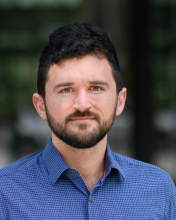Three teams led by Weill Cornell Medicine scientists have received awards from the Starr Cancer Consortium in its 17th and final annual grant competition. The grants will fund research on the deep mechanisms of common cancers and related treatment strategies.
The Starr Cancer Consortium, established in 2006 with generous support from The Starr Foundation, includes The Broad Institute of MIT and Harvard, Cold Spring Harbor Laboratory, Memorial Sloan Kettering Cancer Center, The Rockefeller University and Weill Cornell Medicine. The consortium’s goal has been to encourage highly collaborative and transformative research on cancer biology and novel treatment strategies. Its grants have targeted early-career scientists and have been intended mainly as seed funding for ambitious, long-term projects.
“Collaborative research, combining diverse areas of expertise and knowledge, is at the heart of successful biomedical breakthroughs,” said Dr. Jedd Wolchok, the Meyer Director of the Sandra and Edward Meyer Cancer Center at Weill Cornell Medicine. “We extend our gratitude to The Starr Foundation for fostering these vital combined efforts to advance cancer prevention and treatment.”
Weill Cornell Medicine researchers are the principal investigators for three of this year’s ten funded projects and co-principal investigators for another four of the projects.
“We’re extremely grateful to The Starr Foundation for its generous support over the years, which has enabled our investigators to pursue transformative ideas in cancer research,” said Dr. Hugh Hemmings, senior associate dean for research and chair of the Department of Anesthesiology at Weill Cornell Medicine. “The collective impact of this funding has been extraordinary in supporting innovative and collaborative projects from interinstitutional teams of investigators.”
Dr. Ekta Khurana

Associate Professor of Physiology and Biophysics; Co-Leader of the Cancer Genetics and Epigenetics Program at the Meyer Cancer Center, member of the Englander Institute for Precision Medicine
Prostate cancer non-neuroendocrine lineage plasticity: detection using multimodal integration and immunotherapeutic targeting
Prostate cancer is driven initially by androgen (testosterone) receptor signaling, but commonly develops resistance to androgen-blocking treatments so that it maintains its growth despite low or zero androgen levels. This “castration-resistant” prostate cancer (CRPC) represents the key challenge for oncologists in this field. Dr. Khurana and colleagues recently discovered and defined a relatively common, stem-cell like subtype of CRPC. In their newly funded project, they plan to develop an AI-based method for readily identifying this subtype from biopsied tissue slides. Based on evidence that this stem-cell-like subtype creates an immune-suppressive environment around itself, they also hope to find an effective treatment strategy that reverses this immune suppression to unleash anticancer immunity.
Co-Principal Investigators: Dr. Francisco Sanchez-Vega (Memorial Sloan Kettering Cancer Center), Dr. Yu Chen (Memorial Sloan Kettering Cancer Center), Dr. Roberta Zappasodi (Weill Cornell Medicine)
Dr. Jacob Geri

Assistant Professor of Pharmacology, member of the Meyer Cancer Center
Elucidating and targeting the resistant leukemia stem cell niche using high-resolution in situ protein interactomics and surfaceomics in human bone marrow tissue
Acute myeloid leukemia is hard to cure; the five-year survival rate for patients over 60 years old is only about 20 percent. A key source of treatment resistance is a type of cell called a leukemia stem cell, which can hide in bone marrow, avoiding damage from chemotherapy by staying in a quiescent, non-dividing state. In principle, treatments that could destroy leukemia stem cells as they hide in bone marrow would greatly improve patient outcomes, but scientists so far don’t know enough about these cells to target them selectively in bone marrow. Drs. Geri and Kentsis and their colleagues propose to develop methods to enable that targeting, using a photocatalytic technique for spatially mapping protein interactions within bone marrow. They hope that this approach ultimately will be a general tool for studying cancers and uncovering therapeutic targets.
Co-Principal Investigator: Dr. Alex Kentsis (Memorial Sloan Kettering Cancer Center).
Dr. Anna S. Nam

Assistant Professor of Pathology and Laboratory Medicine, member of the Meyer Cancer Center
Modulating inflammation to eradicate clonal stem cells
Most cancers arise not suddenly but gradually: A healthy, normal cell develops a mutation or other state-change that modestly boosts its growth or survival rate, and the progeny of that cell start to locally replace slower-growing cells of that type. Further mutations in these clonally expanded cells can then trigger faster proliferation and full malignancy. Dr. Nam and her colleagues have been studying how this process in blood-cell-making or “hematopoietic” stem cells (HSCs) of the bone marrow can lead to blood cancers. They have shown in particular how one immune-related signal may be manipulated to trigger the destruction of clonal premalignant HSCs, while another can protect these HSCs from destruction, making malignancy more likely. Part of these findings were recently published by co-principal investigator Dr. Leonard Zon and Dr. Nam in Science. In their new project, they plan to apply advanced single-cell analysis methods to better understand these signals, with the ultimate goal of harnessing them to treat or even prevent blood cancers.
Co-Principal Investigator: Dr. Leonard Zon (The Broad Institute of MIT and Harvard).
Source: WCM Newsroom, 11/30/24

